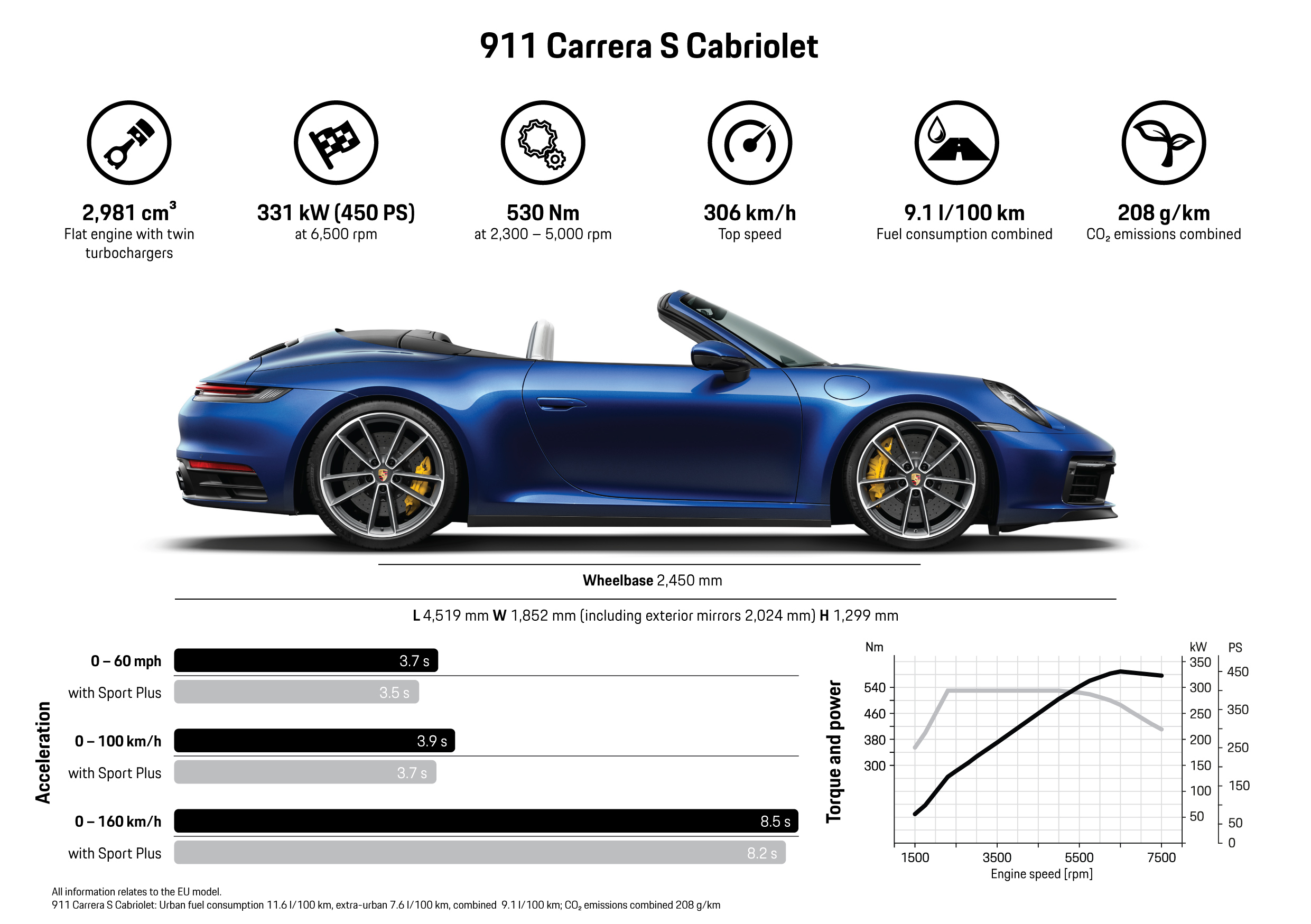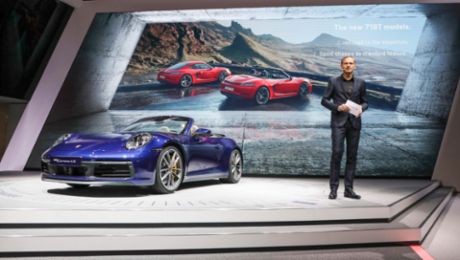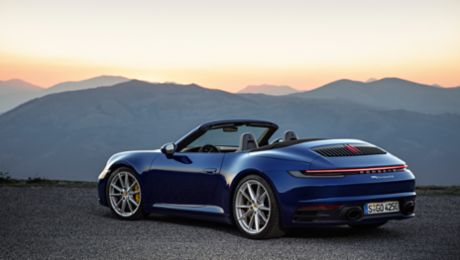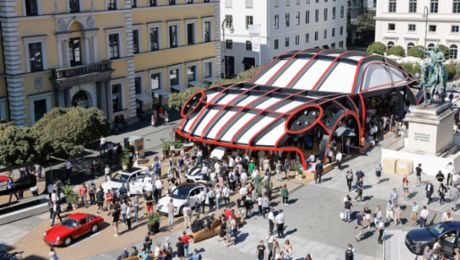The first Porsche sports car from 1948, the 356 “No. 1“ Roadster, already had an emergency convertible top. Up to the presentation of the first 911 generation at the International Motor Show (IAA) in Frankfurt in 1963, open-top variants of the Porsche 356 were popular models in the vehicle range. However, when developing the original 911, the team first concentrated on the Coupé.
Initial draft designs for an open-top variant from chief designer Ferdinand Alexander Porsche then already showed removable roof sections like those used in the 911 Targa in a further developed form. This 911 version was also known as the “safety cabriolet” and made its debut in 1965, also at the IAA in Frankfurt, with a 20-centimetre wide roll-over bar, removable roof section and a rear fabric top. This was known as the soft window. This was followed shortly afterwards by a panorama rear window with heatable glass. The name of the open-top variant – “Targa” – is derived from Targa Florio endurance race on Sicily that Porsche had already won five times. Delivery to customers took place from January 1967 onwards.
A further 14 years then passed until the first presentation of a 911 Cabriolet study. Porsche presented a Cabriolet prototype only in 1981, again at the IAA. This was additionally equipped with all-wheel drive and a wide Turbo body. In March 1982, the series-production version finally made its debut at the Geneva Motor Show, the 911 SC Cabriolet.
This first Cabriolet version of the 911 already impressed with a special roof construction which did not lose its shape when closed even at top speed – even then this was 245 km/h. The new three- bow technology was not based on individual narrow steel bows as a structure under the fabric skin, but on panel-type elements that covered 50 percent of the roof area. It was nevertheless still possible to fold the convertible top down behind the two rear seats.
A secondary effect of the steel panel elements: they also provided rigid roll-over protection when the roof was closed. Extensive reinforcements in the floor assembly of the 911 additionally maintained the overall rigidity of the sports car. As from model year 1983, from August 1982, the 911 SC Cabriolet with 204 PS was available from dealers, initially with a fully manually operated convertible top. The basic price was 64,500 German marks, around 5,000 marks more than for a 911 SC Targa.
Further development to an electrically powered convertible top mechanism represented a great challenge, and this became available as from model year 1987. The roof closures were adapted to electrical operation, two electric motors were installed in a recess behind the rear seat backrests, and power transmission took place via two flexible shafts to deflection gears on the roof frame. The driver controlled the electric drive by a button in the cockpit, and an indicator lamp on the dashboard indicated the end of the respective movement. The two electric motors had to move 13 bows as well as the roof frame and control levers with 22 articulation points on the roof and frame. All this was microprocessor-controlled. The additional cost for the electric drive was 4,000 marks; it was part of the standard equipment only on the 911 Turbo Cabriolet.
The new 911 Cabriolet
Consumption data
911 Carrera S Cabriolet: Combined fuel consumption 9.1 l/100 km; combined CO2 emissions 208 g/km
911 Carrera 4S Cabriolet: Combined fuel consumption 9.0 l/100 km; combined CO2 emissions 207 g/km




